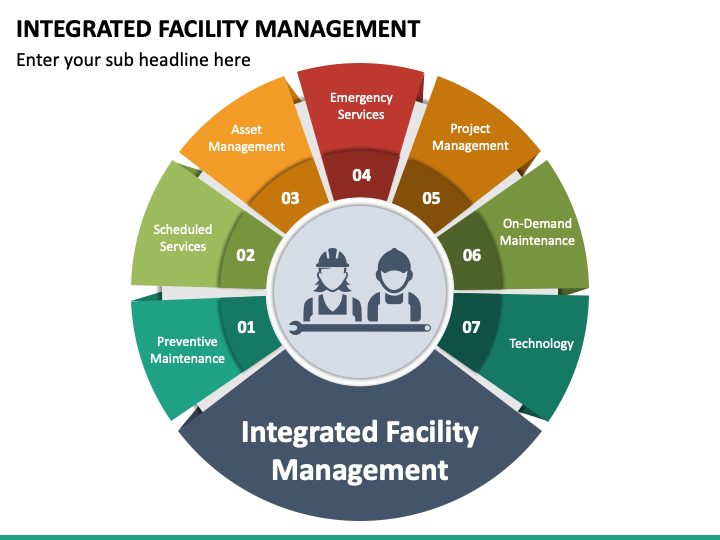Just How Total Facility Management Improves Maintenance and Workflow
Total Facility Management (TFM) represents a transformative change in exactly how organizations approach upkeep and procedures. By leveraging data-driven approaches and integrated technology, TFM not only anticipates and minimizes potential concerns but also maximizes source allotment and boosts productivity. The implications of adopting such an extensive structure expand beyond mere efficiency; they discuss sustainability and lasting property preservation. As we check out the multifaceted benefits of TFM, one may question just how these practices can be tailored to resolve distinct operational challenges.
Enhanced Maintenance Strategies
Enhanced Upkeep Techniques are necessary for maximizing the efficiency and long life of facilitiess. These approaches encompass a methodical method to upkeep that highlights proactive procedures, anticipating analytics, and condition-based tracking. By applying such strategies, companies can successfully lower unintended downtimes and reduce operational disturbances.
One vital part of boosted maintenance is using data-driven decision-making tools. These tools permit facility managers to analyze historical efficiency information, identify patterns, and forecast possible failings before they happen. This predictive maintenance method not only prolongs the life process of equipment yet also boosts safety and security and conformity criteria.
Encouraging and educating maintenance employees are just as important in performing boosted techniques (Total Facility Management). Trained team can accomplish routine evaluations and address small issues prior to they intensify. Furthermore, embracing a comprehensive asset management system helps with monitoring of devices status, maintenance background, and organizing of precautionary procedures
Streamlined Operational Workflows
Optimizing operational operations is critical for the total performance of facility management. By implementing streamlined processes, organizations can lower redundancies, minimize delays, and boost performance. A well-structured functional workflow enables facility supervisors to assign sources successfully, making sure that jobs are finished in a timely fashion.
Using facilitiess management software program can automate routine tasks such as work order management, stock tracking, and scheduling. Clear communication networks amongst group members foster collaboration and responsibility, even more improving operational performance.
Standardizing treatments is one more important component. Establishing ideal practices aids ensure that all personnel are aligned in their technique, minimizing the probability of errors and improving solution distribution. Routine training and updates on workflow processes additionally play an essential function in maintaining consistency and effectiveness.
Inevitably, structured operational workflows add to a more receptive facility management system, allowing companies to concentrate on calculated initiatives as opposed to being bogged down by administrative burdens. By focusing on effectiveness, facility managers can considerably improve the general performance of their procedures.
Proactive Problem Resolution
Regular examinations and keeping an eye on systems play a critical role in this process, allowing facility managers to collect information and prepare for prospective failings. Additionally, fostering open interaction channels amongst team member motivates the very early coverage of problems, additionally helping with prompt resolutions.
Carrying out a detailed facility management software can improve the tracking of upkeep activities and problem coverage, providing useful insights into reoccuring problems and their source. This data-driven technique permits educated decision-making and prioritization of sources.
Eventually, proactive problem resolution not just protects the honesty of facility operations yet likewise boosts employee complete satisfaction and security. By buying strategies that concentrate on avoidance, organizations can produce a much more resistant and reliable why not try this out operational atmosphere, establishing a strong structure for future growth and success.
Expense Effectiveness and Resource Management
How can organizations attain a balance between price efficiency and effective source management in facility operations? The integration of total facility management (TFM) provides he has a good point a tactical framework that improves economic performance while maximizing resource allocation. By combining solutions, companies can streamline operations, decrease redundancies, and take advantage of economic situations of scale.
Efficient source management starts with a comprehensive evaluation of existing assets and operational procedures. Making use of information analytics, companies can identify underutilized sources and address inefficiencies. This educated method allows the application of targeted maintenance schedules, thereby lengthening possession life and lessening unintended downtime.

Training and development of facility management personnel additionally boost expense effectiveness by outfitting them with the skills required to handle resources carefully. Inevitably, by taking on an all natural method to facility management, companies can accomplish substantial price financial savings while making sure that operational efficiency continues to be a leading priority.
Sustainability and Ecological Influence
The assimilation of total facility management (TFM) not just boosts price performance but also plays a crucial role in promoting sustainability and lowering environmental impact. By taking on an alternative approach to facility procedures, TFM promotes the implementation of sustainable techniques that decrease source consumption and waste generation.
Among the crucial components of TFM is the optimization of power use. This includes the fostering of energy-efficient innovations, regular maintenance of cooling and heating systems, and the use of wise structure management systems. These steps not only lower utility prices yet also substantially lower greenhouse gas discharges.
Moreover, visite site TFM advertises using lasting materials in facility upkeep and improvement tasks. By prioritizing eco-friendly items and practices, facilitiess can decrease their general environmental impact while fostering healthier indoor atmospheres.

Verdict
In conclusion, Total Facility Management substantially boosts maintenance and operations with organized methods that highlight predictive analytics and condition-based monitoring. TFM advertises lasting techniques, eventually leading to enhanced facility management end results and a culture of continual renovation within companies.
Total Facility Management (TFM) represents a transformative change in exactly how companies approach maintenance and operations. Making use of facilitiess management software program can automate routine tasks such as job order management, inventory tracking, and scheduling.How can companies attain a balance between cost efficiency and reliable resource management in facility procedures? The integration of total facility management (TFM) supplies a tactical structure that enhances economic performance while maximizing resource appropriation.In conclusion, Total Facility Management dramatically improves maintenance and operations through organized techniques that highlight predictive analytics and condition-based surveillance.